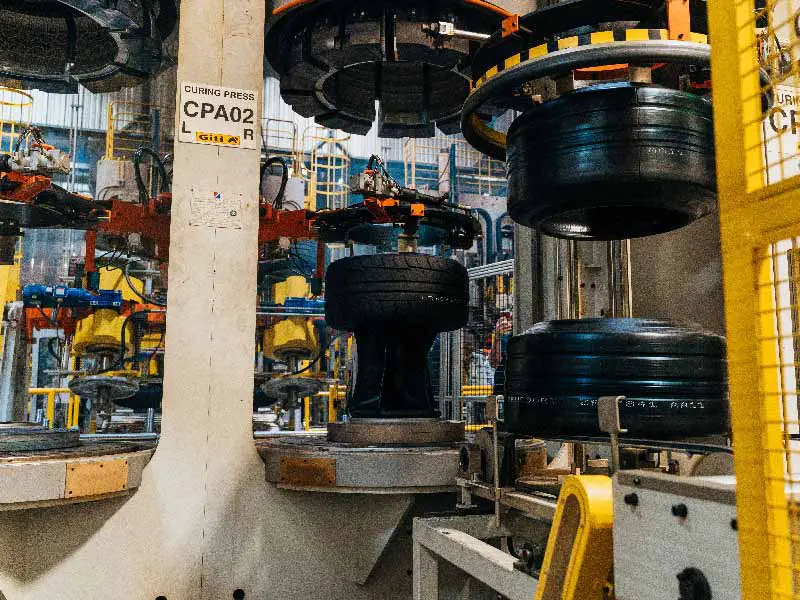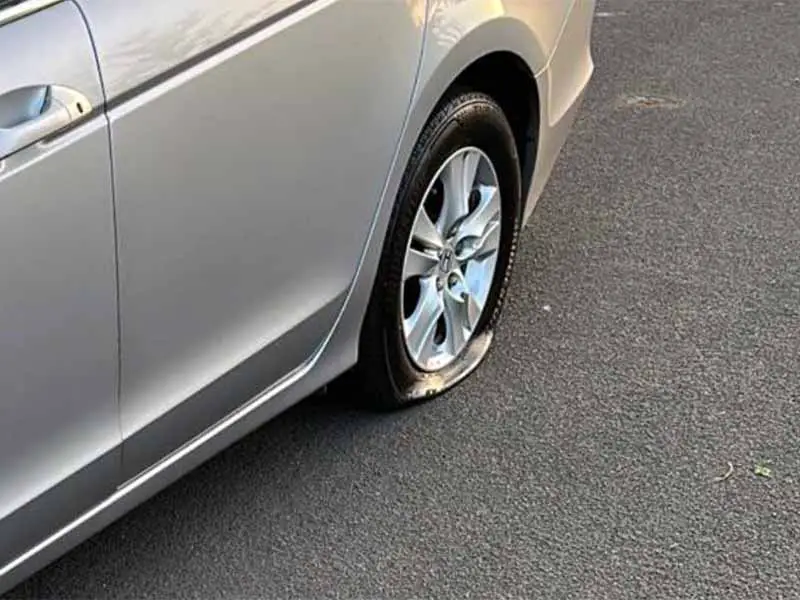You’ve heard about the incredible benefits of run flat tires and how they can keep you moving even after a puncture. But who are the masterminds behind these innovative tires? Let’s dive into the world of top manufacturers crafting these game-changing products.
Who Makes Run Flat Tires?
Run flat tires are produced by leading manufacturers including Bridgestone, Continental, Dunlop, Goodyear, Michelin, Yokohama, Hankook, and Pirelli, among others. These tires allow vehicles to continue driving for a limited distance even after a puncture.
In this article, we’ll delve into the evolution of run flat tires, explore the top manufacturers leading this innovation, understand the different types of run flat tires, and weigh the advantages and considerations of using them.
Let’s take a closer look.

The Top Manufacturers of Run Flat Tires
Run flat tires have become an essential component in modern automotive technology, ensuring safety and convenience for drivers. As the demand for these tires has grown, several manufacturers have risen to the forefront, leading the industry with their innovative designs and advanced technology.
Bridgestone
- Overview: Bridgestone, a global leader in tire manufacturing, has been at the forefront of run flat technology for years.
- Key Offerings: Their RFT (Run Flat Technology) tires are designed to offer drivers the peace of mind of continued mobility even after a puncture. These tires can be driven for up to 50 miles at 50 mph after a puncture, ensuring drivers can reach a safe location.
Continental
- Overview: Continental is another giant in the tire industry, known for its commitment to safety and innovation.
- Key Offerings: Their SSR (Self-Supporting Runflat) technology ensures that the tire remains stable even after a loss of pressure, allowing drivers to continue their journey to a service station or garage.
Dunlop
- Overview: With a rich history in tire innovation, Dunlop has consistently pushed the boundaries of what’s possible.
- Key Offerings: Their DSST (Dunlop Self-Supporting Technology) and ROF (Run On Flat) tires are designed to provide drivers with the confidence to continue driving after a puncture, without compromising on performance.
Goodyear
- Overview: Goodyear, one of the world’s largest tire companies, has been a pioneer in introducing advanced tire technologies.
- Key Offerings: Their EMT (Extended Mobility Technology) and ROF tires are built to offer both durability and safety, ensuring that drivers can maintain control even after a tire puncture.
Michelin
- Overview: Michelin, a name synonymous with quality in the tire industry, has been a key player in the evolution of run flat tires.
- Key Offerings: Their ZP (Zero Pressure) technology ensures that even with a puncture, the tire can maintain its shape and function, allowing drivers to continue their journey without immediate intervention.
Other Noteworthy Manufacturers
- Yokohama, Hankook, and Pirelli: These manufacturers, while perhaps not as globally recognized as the aforementioned brands, have also made significant contributions to run flat tire technology. Their offerings provide a blend of performance, safety, and reliability.
Understanding the Different Types of Run Flat Tires
Run flat tires have revolutionized the way we approach road safety. But did you know there are different types of run flat tires, each with its own unique design and benefits? Let’s explore these types in detail.
Self-Supporting Run Flat Tires
- Overview: This is the most common type of run flat tire. Its structure is designed to support the vehicle’s weight even when the tire loses air pressure.
- How They Work: These tires have reinforced sidewalls that allow them to bear the vehicle’s weight even after a puncture. This design ensures that the tire doesn’t collapse upon losing air.
- Benefits:
- Ability to drive for a limited distance (typically up to 50 miles) after a puncture.
- Enhanced safety as there’s no immediate need to change the tire on a busy road.
- Limitations:
- Generally, they offer a firmer ride compared to regular tires due to their reinforced structure.
- They might not be as readily available in all sizes as traditional tires.
Auxiliary-Supported Run Flat Tires
- Overview: This system uses an additional support ring attached to the wheel, which can support the vehicle’s weight in case of a loss of air pressure.
- How They Work: If the tire loses pressure, the support ring ensures the vehicle remains stable and can be driven for a limited distance.
- Benefits:
- Offers a smoother ride compared to self-supporting run flat tires.
- Provides enhanced stability and control after a puncture.
- Limitations:
- The system requires specialized wheels, making it a more expensive option.
- Not as widely available as self-supporting run flat tires.
Self-Sealing Run Flat Tires
- Overview: These tires contain an extra lining that seals small punctures automatically, preventing air loss.
- How They Work: The inner lining of the tire is coated with a sealant. When a puncture occurs, this sealant fills the hole, preventing air loss.
- Benefits:
- No need for immediate tire replacement after minor punctures.
- Offers a driving experience similar to regular tires.
- Limitations:
- Can only seal punctures up to a certain size.
- Might not be as effective in sealing larger punctures or cuts.
How Do Run Flat Tires Work?
Run flat tires have become a staple in modern automotive technology, ensuring that drivers can continue their journey even after a puncture. But how do these tires achieve this remarkable feat? Let’s break down the science and mechanics behind run flat tires.
The Basic Principle
- Overview: At its core, a run flat tire is designed to maintain its shape and function even when it loses air pressure.
- Key Mechanism: The tire’s structure, especially the reinforced sidewalls, allows it to bear the vehicle’s weight even when deflated.
Reinforced Sidewalls
- Overview: One of the primary features that distinguish run flat tires from regular tires is their reinforced sidewalls.
- Function: These thicker and tougher sidewalls prevent the tire from collapsing upon losing air, ensuring the vehicle remains stable.
- Benefits:
- Provides drivers with the confidence to continue driving after a puncture.
- Reduces the risk of accidents caused by sudden tire blowouts.
Distance and Speed Limitations
- Overview: While run flat tires offer the advantage of continued mobility after a puncture, there are certain limitations in terms of distance and speed.
- Typical Range: Most run flat tires allow vehicles to be driven for up to 50 miles after a puncture.
- Speed Consideration: The recommended speed when driving on a punctured run flat tire is around 50 miles per hour.
Monitoring Systems
- Overview: Many vehicles equipped with run flat tires also feature Tire Pressure Monitoring Systems (TPMS).
- Function: TPMS alerts drivers when there’s a significant drop in tire pressure, ensuring they’re aware of the situation and can take appropriate action.
- Benefits:
- Enhances safety by providing real-time information about tire pressure.
- Allows drivers to make informed decisions about when and where to get the tire checked or replaced.

The Advantages of Using Run Flat Tires
Run flat tires have gained significant traction in the automotive world, and for good reason. These tires offer a myriad of benefits that enhance both safety and convenience for drivers. Let’s delve into the key advantages of using run flat tires.
Enhanced Safety on the Road
- Immediate Response: With run flat tires, there’s no immediate need to pull over and change the tire if you experience a puncture. This is especially beneficial on highways or in unsafe areas.
- Reduced Risk of Accidents: Sudden tire blowouts can lead to loss of vehicle control. Run flat tires reduce this risk by maintaining their shape even after a puncture.
No Need for a Spare Tire
- Space Saving: Without the need to carry a spare tire, drivers can utilize the extra space in their vehicle for other essentials or luggage.
- Weight Reduction: Eliminating the spare tire and related tools can reduce the vehicle’s weight, potentially improving fuel efficiency.
Convenience and Peace of Mind
- Continued Mobility: After a puncture, run flat tires allow drivers to continue their journey for a limited distance, providing ample time to find a service station or garage.
- Avoid Roadside Tire Changes: Changing a tire on the side of a busy road can be both dangerous and daunting. With run flat tires, this inconvenience is often avoided.
Cost Savings
- Tow Truck Expenses: In the event of a tire puncture in a remote area, drivers might need a tow truck to transport their vehicle to the nearest garage. With run flat tires, this expense can often be avoided.
- Spare Tire Maintenance: Without the need for a spare tire, drivers can save on maintenance and replacement costs associated with spare tires.
Resources
Below are some links you may find helpful when learning about tires
Final Thoughts
From their historical evolution to the cutting-edge technology they employ, run-flat tires represent a significant leap in vehicular safety. Leading manufacturers have invested heavily in research and development, ensuring that today’s drivers have access to some of the most advanced tires ever produced.
While they come with numerous advantages, it’s essential to be aware of certain considerations to maximize their benefits.
Good luck and happy motoring.





